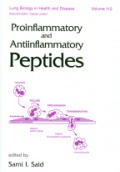Oxidative Folding of Peptides and Proteins
Luis Moroder,Johannes Buchner
ISBN: 9780854041480
Vydavatelství: Royal Society for Chemistry
Rok vydání: 2008
Vazba: Hardback
Kategorie: Professional and scholarly
Počet stran: 448
Dostupnost: Skladem
Původní cena: 5 359 Kč
Výstavní cena:
4 823 Kč(t.j. po slevě 10%)
(Cena je uvedena včetně 10% DPH)
Katalogová cena: 144.99 GBP
Nárok na
dopravu zdarma
Termín dodání na naši pobočku v Brně je přibližně 3-4 týdny.
The formation of disulfide bonds is probably the most influential modification of peptides and proteins. An elaborate set of cellular machinery exists to catalyze and guide this process. In recent years, significant developments have been made in both our understanding of the in vivo situation and the in vitro manipulation of disulfide bonds. This is the first monograph to provide a comprehensive overview of this exciting and rapidly developing area. It offers in-depth insights into the mechanisms of in vivo and in vitro oxidative folding of proteins as well as mono- and multiple-stranded peptides. Procedures applied for laboratory and industrial purposes are also discussed by top experts in the field. The book describes the enzymes involved in the correct oxidative folding of cysteine-containing proteins in prokaryotes and eukaryotes. It then goes on to discuss the mimicking of these enzymes for successful in vitro folding of proteins (including synthetic replicates) and to deal with important issues concerning cysteine-rich peptides. The ability of natural bioactive peptides to fold correctly, and in high yields, to form defined structural motifs using cysteine sequence patterns is still puzzling. With this in mind, synthetic procedures for establishing native cysteine frameworks are discussed using selected examples, such as the potential of selenocysteines. The biotechnological and pharmaceutical relevance of proteins, peptides, their variants and synthetic replicates is continuously increasing. Consequently, this book is invaluable for peptide and protein chemists involved in related research and production.
